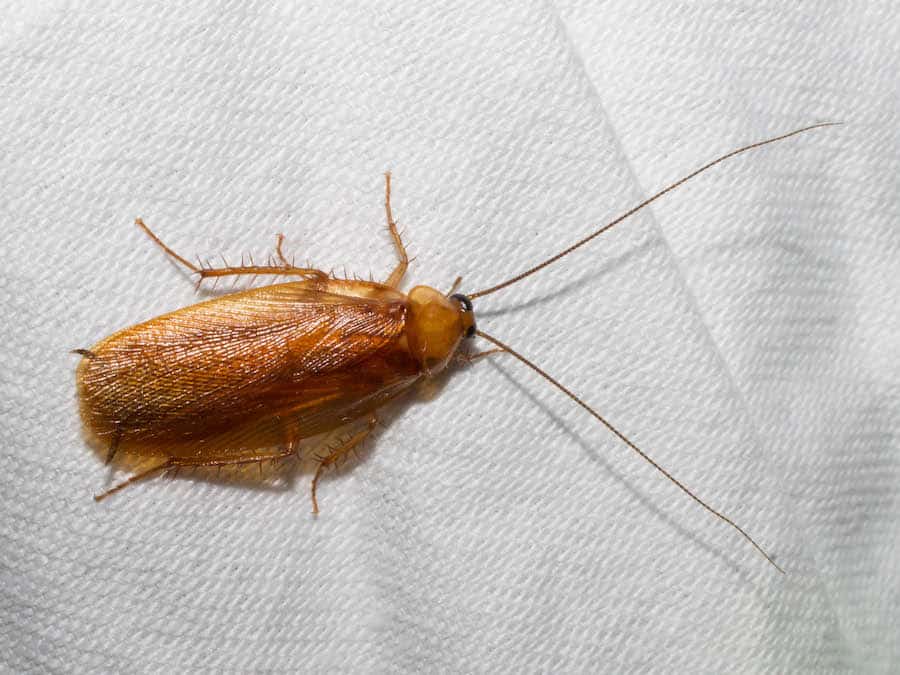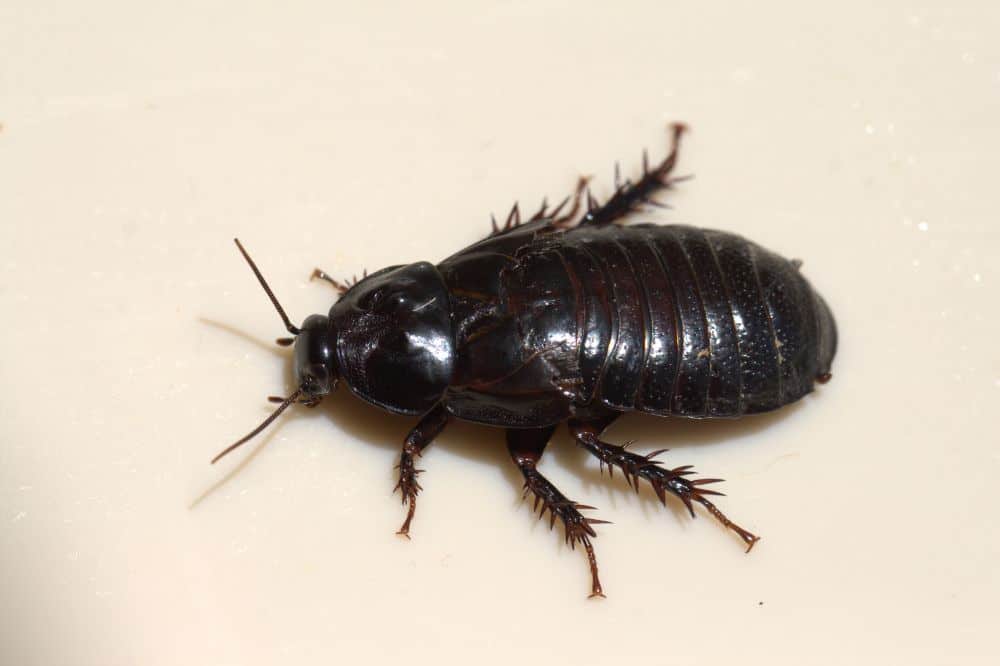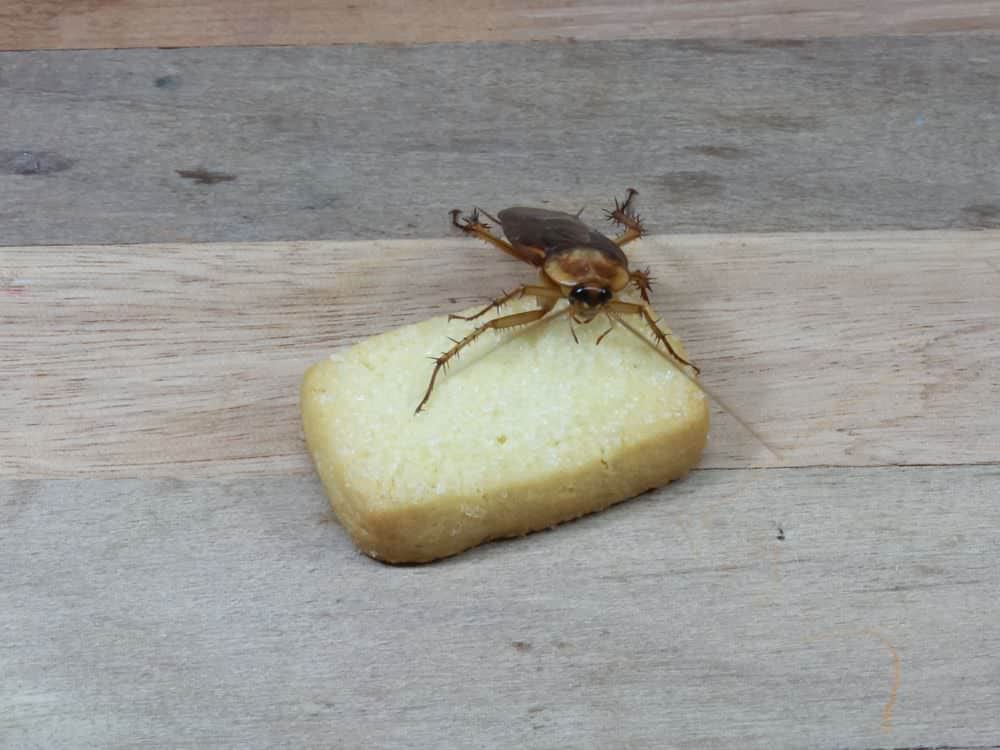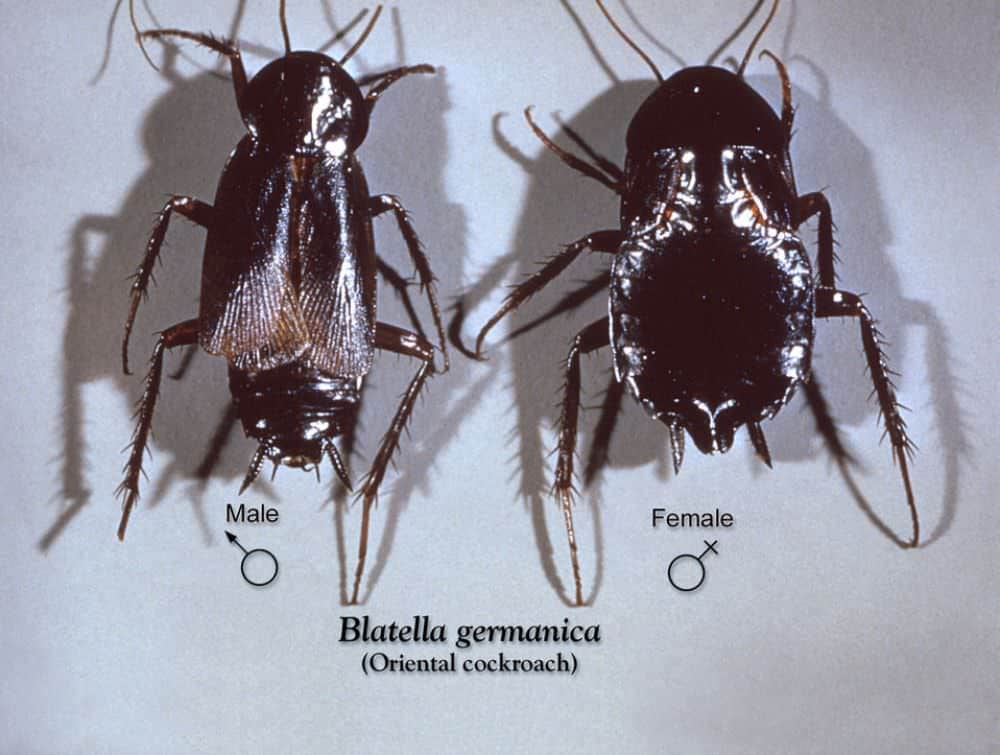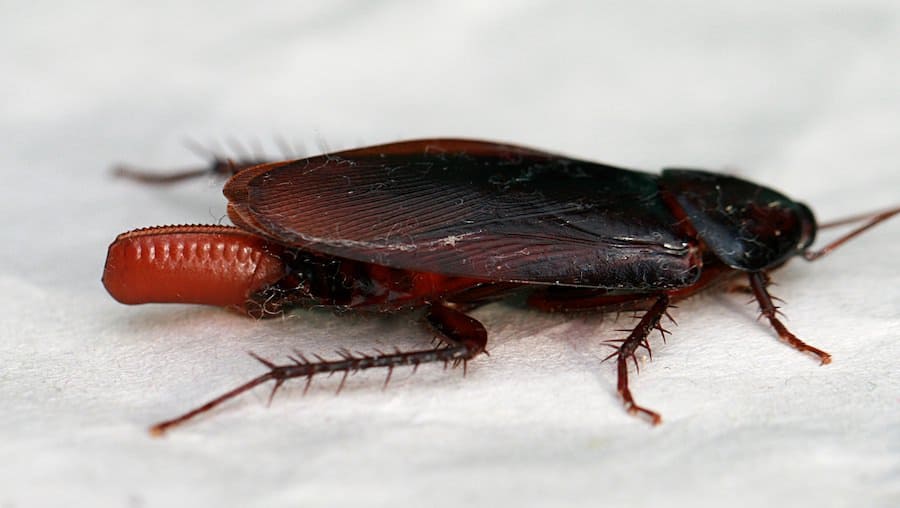Flying Roaches
Merely the thought of encountering flying cockroaches can send shivers down your spine. These hardy pests have persisted for more than 300 million years; needless to say, they are made for survival.
Most cockroach species do have wings but can all of them fly? Today we will have a look at the different species that do fly, what attracts them and how to get rid of them.
Do All Species of Cockroaches Fly?
Most cockroach species have wings, but only a fraction of roaches use them to fly. These insects are relatively large, with fat bodies. Fortunately for us, these proportions don’t make for the best flyers.
Cockroaches are very quick on their feet, therefore, this is their preferred way of traveling, of course. Take the American cockroach, for example. This sleek bug can move up to 5 feet per second, which equates to 3.4 miles per hour. I know this may not sound like much for us, but for an insect this small, it’s lightning fast.
Most cockroaches avoid flying simply because, in the air, they are easy prey for nearby bats and birds. Flying cockroaches are not the most accomplished of flyers either. Much like the bumblebees, their bodies don’t make for the best aerodynamics. We often perceive them as clumsy flyers, wobbling about in the air. There are still some species who try their best, and some who are quite decent flyers, in cockroach terms.
In view of their wings, roaches can sometimes be mistaken for other flying insects.
The American Cockroach
The American cockroach is probably one of the most well-known pests in the United States. These rank among some of the larger roaches we can expect to see wandering about our homes. Adults can grow to be almost 2 inches long.
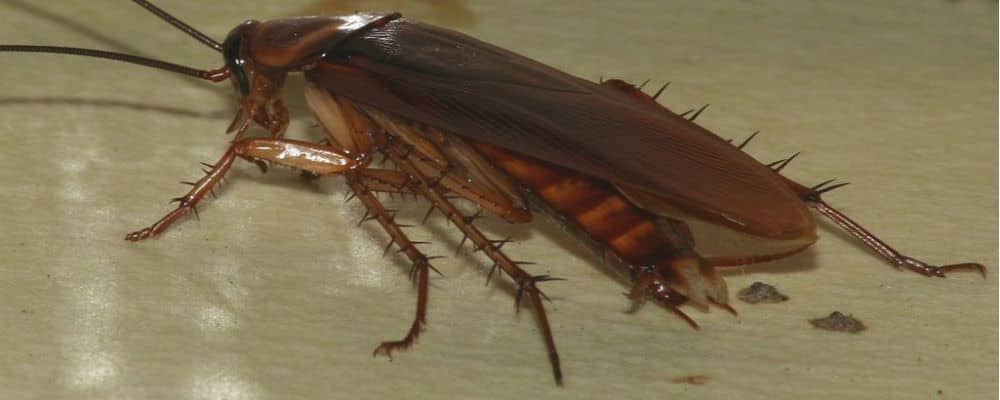
Experts believe that this roach came to the U.S. in the early 1600s, via ships coming in from Africa. Today, they are most common in the Northern states, where they typically infest sewers and drains. Fortunately, they prefer to stay outdoors, only coming inside when food becomes scarce, or the weather turns bad.
These cockroaches prefer moist environments: ideally, dark and warm places around 70 degrees Fahrenheit to 80 degrees Fahrenheit. They are brownish, with an oval-shaped body.
They have two sets of wings that are longer than the body itself. The forewing is quite dense, very dark yellow, almost orange. The hindwing, which it uses to fly with, is narrow and more delicate, with a very light, sometimes transparent, appearance.
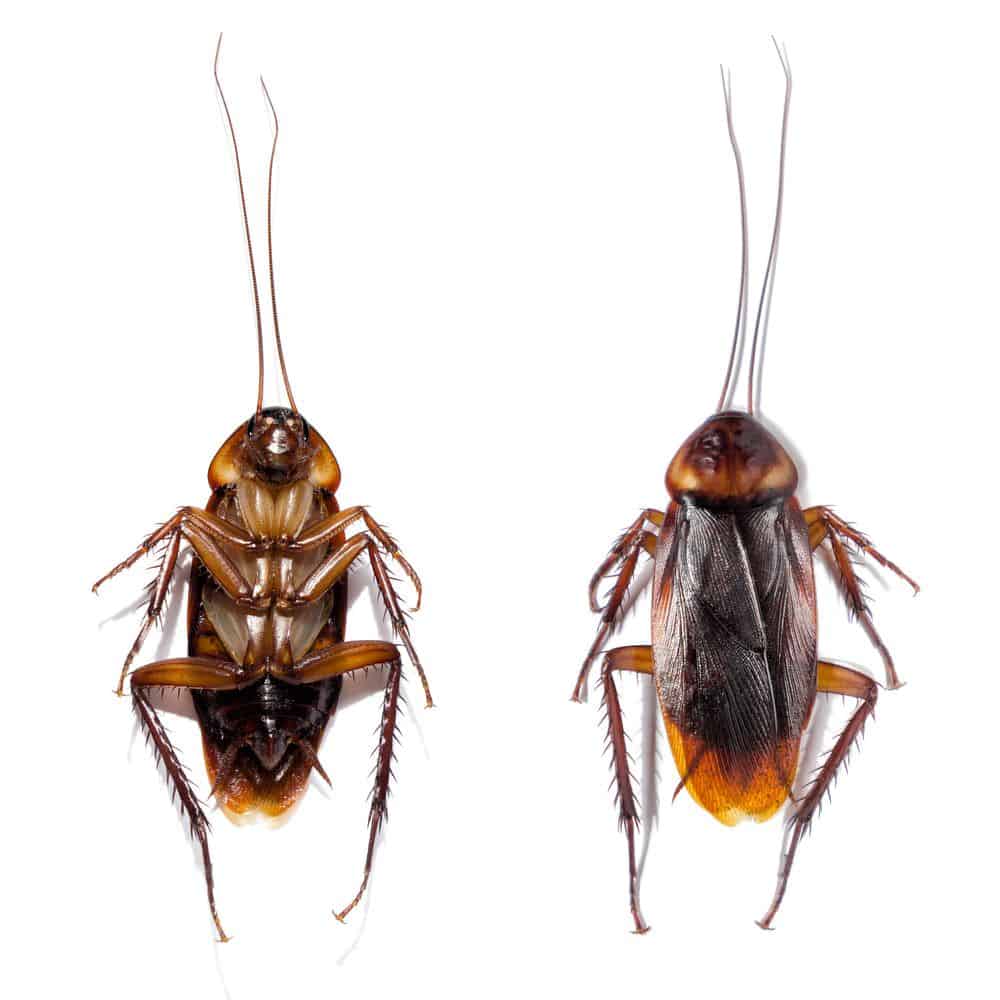
American cockroaches aren’t the best flyers, only capable of traveling a short distance. They mostly use their wings to glide through the air, when escaping to lower ground.
The Brown-Banded Cockroach
The brown-banded cockroach is relatively small when compared to the American roach. Adults tend to reach a modest size of half an inch. Unlike the American, which prefers to stay outdoors, this type thrives inside our homes. In fact, it spends its entire life indoors.
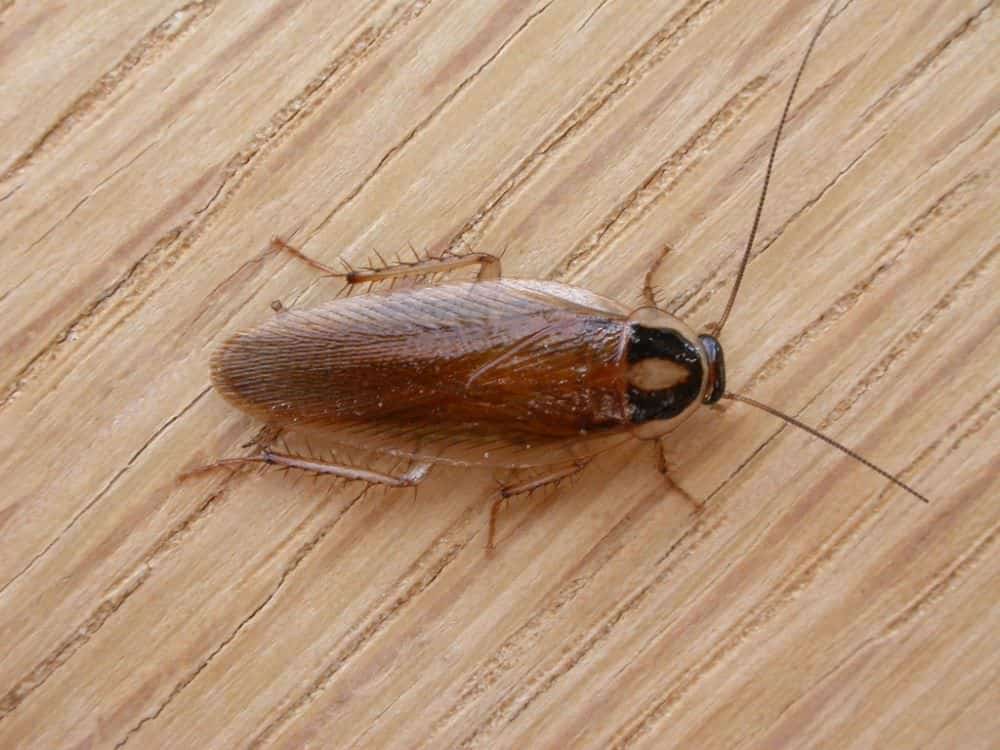
Although this species is common in the United States, it’s thought to have been brought in by travelers from Africa and Cuba. These roaches prefer to seek shelter on higher ground, such as cabinets, rather than floor level. They can also nest inside furniture or near electrical outlets.
The brown-banded cockroach is often mistaken for the German roach. They can seem very similar if you don’t know what to look for. One easy way to recognize this type is by the large brownish bands spanning across its abdomen and midsection.
The males look slightly different than the females. Males have longer, slender bodies with a lighter color throughout. Females are broader and sometimes shorter.
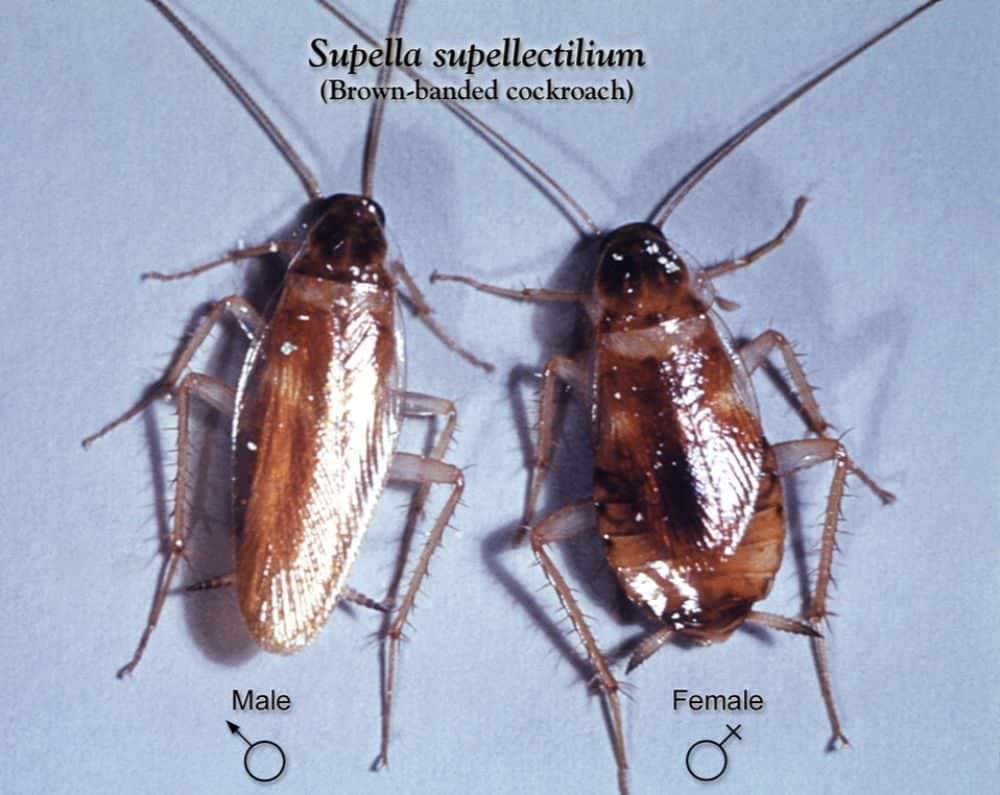
Both males and females have a set of wings, yet only the males can fly. Their wings are longer than their body. Although they can fly, they usually only do so as a quick escape. The females can’t fly as their wings are too small and somewhat underdeveloped.
The Pennsylvania Wood Cockroach
Pennsylvania wood cockroaches are quite large, the males reaching about an inch long. Females are smaller, growing to around 0.75 inches long. Males generally have a dark brown color with lighter, almost yellow, edges around the body. Females, on the other hand, are very dark, almost black. Like the brown-banded roach, they also have a shorter fatter body.
Females don’t have fully-developed wings. Instead, the wings resemble small pads merely resting on their backs. The males are regular flyers, usually traveling in large groups. Although they can’t sustain being in the air for long periods, their wings are long and robust.
The Smoky Brown Cockroach
The smoky brown cockroach is a large, dark brown, almost mahogany-colored roach, growing to about 1½ inches long.
This type spends most of its time munching on decaying plants and trees. Occasionally, when the roach ventures indoors, it typically creates a nest in the attic or crawl spaces, where conditions resemble tree holes.
The smoky brown cockroach prefers tropical climates, so very rarely do we spot it further north. We usually see them around Central and East Texas, along the Gulf Coast and throughout Florida.
They are built to be flyers and, with their strong wings, they take to the air during night time. This is also how they usually enter our homes, by flying from the trees and landing on top of the roof. They then make their way indoors through cracks or air vents.
The Asian Cockroach
The Asian cockroach is a unique species, originating from Japan. This kind has a very light, shiny color with two broad black stripes running along its back toward the head. This roach primarily creates its nest among composted or mulched vegetation matter, inside gardens and landscaped areas.
The Asian cockroaches are strong flyers, still, they rarely take to the air unless disturbed. Their wings are quite narrow, yet long, which makes them perfect for flying.
The Australian Cockroach
The Australian cockroach is a tropical roach, thriving in warmer climates. We often spot it throughout the Southern states and coastlines.
This roach is about 0.91 inches to 1.38 inches long, with a unique striped appearance. The body is a typical brown color, although throughout each section there is a yellow edge.
The wings on this roach also outgrow its body. These are, again, narrow which allows it to fly well.
What Attracts Flying Cockroaches?
You know those nights when you are enjoying the evening on the porch, and suddenly a fat cockroach is flying directly towards your face? Does the roach specifically target your most vulnerable area? The quick answer is “no.” Cockroaches are not attracted to humans, no matter how charming we may look.
Cockroaches do, however, find our human homes attractive in various ways. Unfortunately, we provide easy access to many of the things roaches require to thrive, namely: warmth, shelter, and food.
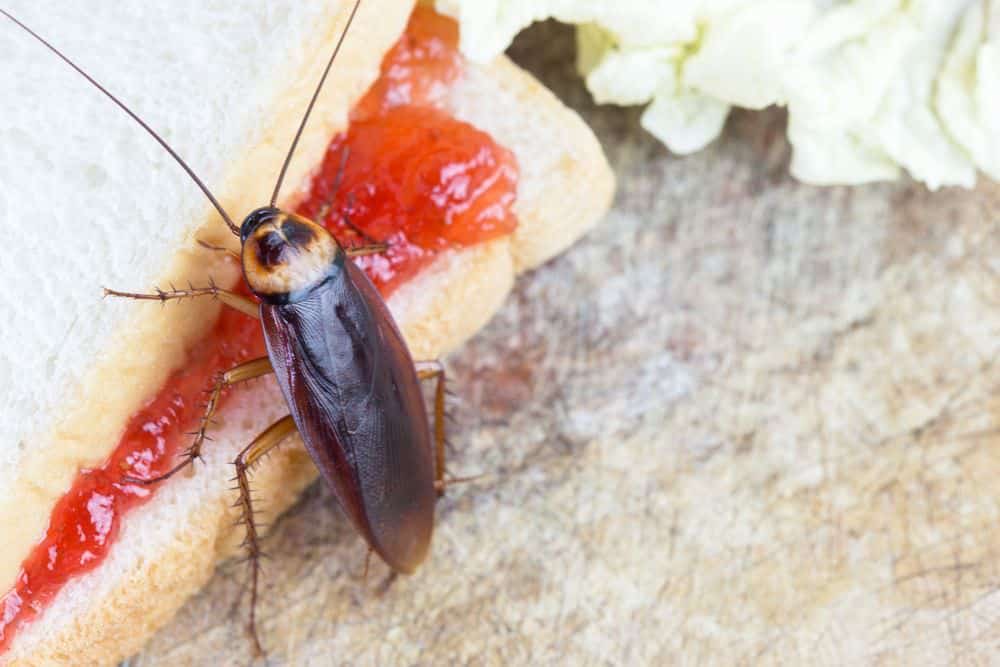
Flying cockroaches, on the other hand, are a bit different. Most of these are also attracted to light, much like moths and mosquitoes. This means when you are sitting under the porch light, your face or head reflects some of that light and creates a halo effect. Your head soon becomes a beacon of light for the insect, which makes you seem irresistible.
The same goes for an open window leading to the room where you forgot to turn off the light. This is one of the main ways cockroaches accidentally get inside during the night.
Many of the roaches capable of flying are, in fact, outdoor insects. Very rarely do these infest homes except, as I mentioned above, when food is scarce or the weather is bad. During ideal conditions, these species prefer keeping their distance from humans.
Cockroaches have several ways to get inside our homes. Their sleek, flat bodies allow them to squeeze through the smallest of cracks. Even the light above your doorframe is enough to attract the flying roach.
Once inside your home, you can expect to find these flying critters near heat sources. This could include such places as heating ducts or behind appliances, where electrical outlets may heat the surrounding air.
How to Get Rid of Flying Cockroaches
Crawling cockroaches are one thing, flying roaches are another. Crawling pests have a tough time reaching places such as countertops, where our food is out. Flying critters, however, find this to be no big issue.
Getting rid of flying cockroaches is essential, though not only to save your nerves. They can still transmit diseases and increase the risk of allergies. Flying cockroaches die the same way as crawlers do. Roach bombs may be sufficient since these are excellent at targeting anything flying around the room.
Treating your doors and windows with insecticide may keep them at bay and prevent them from entering. Bait stations or gel baits are also good ways to reduce the number of roaches in your house. These will attract them and, once they consume the poison, they take it back to the nest and die. The others will feed on the dead roach, and thereby be poisoned as well.
Summary
Flying cockroaches are an annoyance beyond the typical crawlers. Not only the thought of it, but also having a giant bug buzzing around your home can send you calling for the pest control. Fortunately, not all species can fly, and generally those that do, tend to stay outside.

